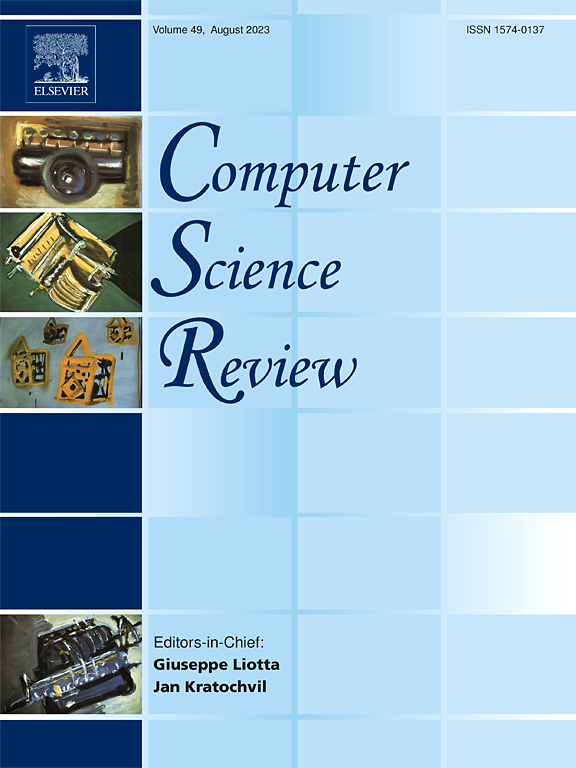Advances in natural language processing for healthcare: A comprehensive review of techniques, applications, and future directions
IF 12.7
1区 计算机科学
Q1 COMPUTER SCIENCE, INFORMATION SYSTEMS
引用次数: 0
Abstract
Natural Language Processing (NLP) techniques have gained significant traction within the healthcare domain for analyzing textual healthcare-related datasets, sourced primarily from Electronic Health Records (EHR) and increasingly from social networks. This study delves into applying NLP technologies within the healthcare sector, drawing insights from textual datasets from various sources. It reviews the relevant articles from 2019 to 2023 and compares the pertinent solutions included therein. In addition, it explores the various NLP technologies used for processing healthcare datasets in multiple languages. The review focuses on existing studies related to various medical conditions, including cancer and chronic and infectious diseases. It categorizes these cutting-edge studies into four different NLP task categories: prediction and detection, text analysis and modeling, information processing, and other healthcare applications. Notably, the findings reveal that the most prevalent NLP tasks employed in healthcare revolve around risk prediction and text classification. Moreover, the study identifies a pressing need for more extensive research that encompasses the utilization of non-textual medical datasets from EHR, such as X-rays, computed tomography (CT) scans, and magnetic resonance imaging (MRI) scans. A key observation is that much of the current research studies about NLP related to the healthcare field were primarily using conventional data processing methods, such as ML and DL techniques. Despite their success, these methods frequently have several distinct limitations as they are not able to handle large-scale, complex datasets. In contrast, there is less focus on sophisticated technologies such as big data analytics and transformer-based modeling. Big data analytics can manage massive amounts of unstructured data from sources such as EHRs and social media, providing a more comprehensive insight into healthcare patterns. Transformer models, like BERT and GPT, are designed to detect complex patterns and contextual relationships in text, making them particularly useful for medical text classification, sentiment analysis, and disease prediction. Current research studies have not fully explored the potential of these advanced technologies, which could significantly increase the efficiency and scalability of natural language processing applications in healthcare. This highlights opportunities for further exploration and innovation within the domain of NLP in healthcare.
医疗保健领域自然语言处理的进展:技术、应用和未来方向的全面回顾
自然语言处理(NLP)技术在医疗保健领域获得了巨大的吸引力,用于分析文本医疗保健相关数据集,这些数据集主要来自电子健康记录(EHR),越来越多地来自社交网络。本研究深入研究了NLP技术在医疗保健领域的应用,从各种来源的文本数据集中获得见解。回顾了2019年至2023年的相关文章,并对其中包含的相关解决方案进行了比较。此外,它还探讨了用于处理多种语言的医疗保健数据集的各种NLP技术。该审查侧重于与各种医疗条件有关的现有研究,包括癌症、慢性和传染性疾病。它将这些前沿研究分为四个不同的NLP任务类别:预测和检测、文本分析和建模、信息处理以及其他医疗保健应用。值得注意的是,研究结果显示,医疗保健中最普遍的NLP任务围绕着风险预测和文本分类。此外,该研究还指出,迫切需要进行更广泛的研究,包括利用电子病历中的非文本医疗数据集,如x射线、计算机断层扫描(CT)和磁共振成像(MRI)扫描。一个关键的观察是,目前与医疗保健领域相关的许多关于NLP的研究主要使用传统的数据处理方法,如ML和DL技术。尽管取得了成功,但这些方法往往有几个明显的局限性,因为它们不能处理大规模、复杂的数据集。相比之下,对大数据分析和基于变压器的建模等复杂技术的关注较少。大数据分析可以管理来自电子病历和社交媒体等来源的大量非结构化数据,从而更全面地了解医疗保健模式。像BERT和GPT这样的转换模型被设计用来检测文本中的复杂模式和上下文关系,这使得它们对于医学文本分类、情感分析和疾病预测特别有用。目前的研究还没有充分探索这些先进技术的潜力,这些技术可以显著提高医疗保健领域自然语言处理应用的效率和可扩展性。这凸显了NLP在医疗保健领域进一步探索和创新的机会。
本文章由计算机程序翻译,如有差异,请以英文原文为准。
求助全文
约1分钟内获得全文
求助全文
来源期刊

Computer Science Review
Computer Science-General Computer Science
CiteScore
32.70
自引率
0.00%
发文量
26
审稿时长
51 days
期刊介绍:
Computer Science Review, a publication dedicated to research surveys and expository overviews of open problems in computer science, targets a broad audience within the field seeking comprehensive insights into the latest developments. The journal welcomes articles from various fields as long as their content impacts the advancement of computer science. In particular, articles that review the application of well-known Computer Science methods to other areas are in scope only if these articles advance the fundamental understanding of those methods.
 求助内容:
求助内容: 应助结果提醒方式:
应助结果提醒方式:


